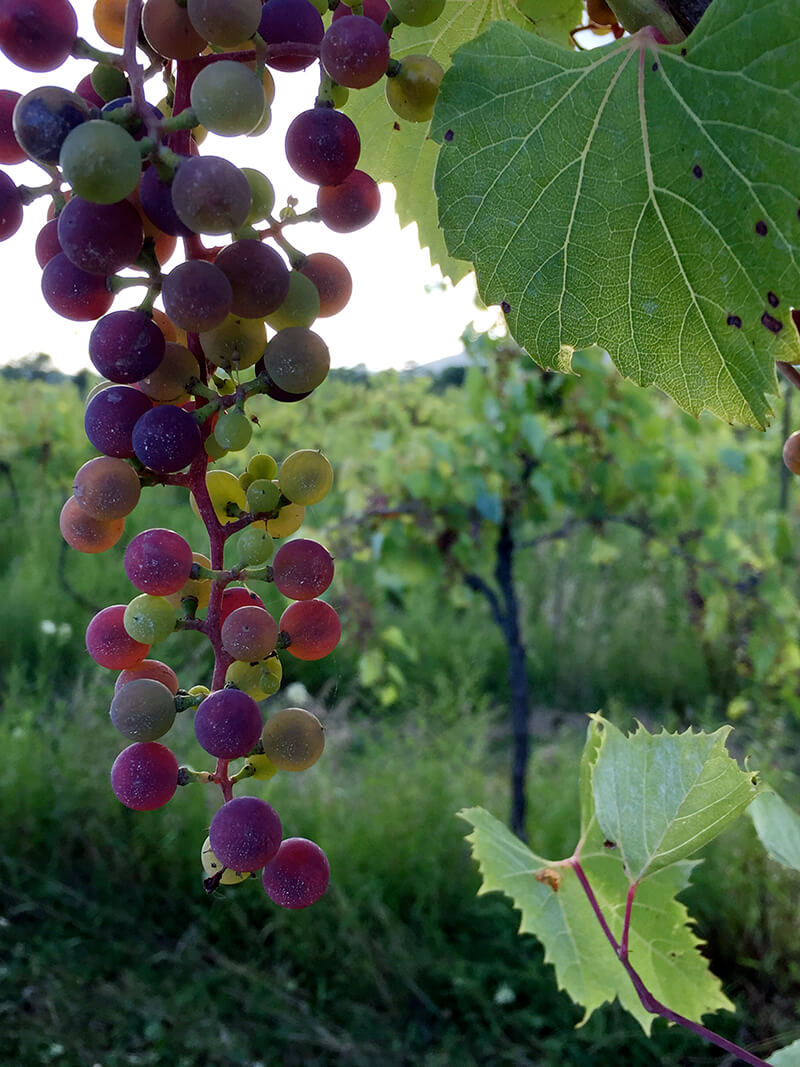When the wine writer emeritus Hugh Johnson told Washington Post wine writer David McIntyre that “orange” wines were a sideshow and a waste of time, fur raised on Facebook and Twitter. He went on to say, “Making good wine is hardly modern technology, it’s just experience and common sense. And hygiene!”

He’s right about the part on making good wine, of course. But the sharp that stuck in the throats of wine drinkers who have come to love skin-contact wines (full disclosure, I did write a love poem to Georgian wine, home to skin-contact) was that this wonderful writer (thoughtful enough to write me a fan letter after The Battle for Wine and Love came out, I was completely honored), the very same one who wrote The History of Wine, failed to realize that orange wine was nothing new but a revival of all things old, and made by common sense and without a doubt, hygiene.
Yes, Mr. Johnson, today we do know how to make a really good wine and many times—though not always—the ancients had something to teach us way more than the modern laboratory does. Cleanliness of course is key. All agreed.
Back in something like 2006 the first skin-contacts started to arrive on our shores. Many weren’t successful. Some had dried, starched fruit and aggressive tannins. But over the past decade as the skins were more understood as a way to make wine without addition, when the use of clay for fermentation spread (grape juice takes to clay as butter takes to toast), and winemakers learned to do less, great “orange” wines have proliferated. Not because they were a style, but because they had a purpose. They have developed a juiciness that combine the refreshment of white with the satisfaction of red. Many are in this category. Some are raised in wood like Radikon, La Stoppa and La Garagista, but others raised in clay like Vodopevic, Pheasants Tears and Iago.
The disappointment here was not that Mr. Johnson didn’t like orange wines. He gets to. But from this scholar and historian, we all expected a more thoughtful and researched statement and opinion.
Now we have another piece from him, in Decanter, where he seemed to suggest that natural wines were the wine equivalent of the Paleo Diet. In it he posed the question; “Is ‘natural’ a self-justifying word to cover any sort of accident?”
I think it’s time for Mr. Johnson to take a break from garden writing for a minute to reconsider his words. Give us the courtesy of a more well-researched response instead of falling down the tweet drain—the second son of the blog—where unsupported feelings have become the norm. There are plenty of wines that are made like a military bed, tightened so extremely that an accident surely has happened. And yet it finds its way into a bottle. This statement is a little aggressive.
Then he dances with a lovely line that could have had some truth to it. “Wines like unmade beds are the In Thing.”
But what exactly does he mean? What is his unmade bed and how tight does he like his sheets? Hospital corners? A little rumpled just enough to remember the night of passion? Give us a little there, there.
I kind of liked his unmade bed analogy. Today, there are indeed too many wines, “like unmade beds.” These to me are unfinished, quick to the bottle before the flavors and aromas have evolved to stability. Many are being supported mostly by newcomers to wine who find these wines fresh. This is a state of infatuation that can stay with the drinker for I’d say, up to ten years. And to some sommeliers who are following trends it could be an ‘In Thing.’ And my sympathies are with him if he has fallen victim to such a wine director. But there is life beyond the bottled wine still in progress, and surely he’s had these—because they are some of today’s most celebrated wines, but failed to identify them.
However, when he suggests the word natural is a coverup tactic, is he actually suggesting that Burgundy, Bordeaux, Brunello, Barolo, made according to the spec sheet, still with ridiculous amounts of very bad and sour wood taint, too much acrid SO2 addition, tannin addition and sloppy acidification, not to say anything about chemical agriculture, are superior? Do those get pass? Or is it that Mr. Johnson knows how to avoid those wines yet does not yet know how to navigate the world of natural? In that case he should subscribe to my newsletter.
The most stupefying sentiment, however, was tucked into his penultimate graf.
The sales pitch for natural wine usually tells you that conventional wines contain a lot of non-grape juice gunk. Fish guts: horror. Egg whites: poison. Sulphites: allergens. Colouring: dishonest. Sugar: cheating.
There seems to be a high ground—is it moral, ethical, fashionable, hygienic?—shared by ‘naturalists’ and vegans. Then again, if you read the list of preservatives and allergens on any supermarket packet, you may want to give up eating altogether.
Mr. Johnson fails to acknowledge the 72+ which sail beyond chaptalization and fining…and coloring? Really Mr. J, do you want your claret colored? And by the way, who is giving this so-called sales pitch? He also—and surely he knows better—understands that most of today’s wines are not made by common sense and vintage, but by marketer and machine. And I don’t know about you, but I don’t eat processed food with anything artificial in it.
Look: Most of us have come to natural wine because the other seems dead. Lifeless. Natural wine, made with grape alone from healthy soil—the good ones, and there are many—make us happy.
Many of us choose our food the way we choose our wine and choose our wine the way we choose our food. Meaning any list of ingredients that I don’t want to ingest, whether in cookies or in wine, I don’t. Real food alone. Yes. Grape alone. A little SO2 perhaps. Minimum intervention. Yes.
These wines mesh with our philosophy AND excite our senses. This is not the ‘in thing,’ this is not a fad. This is the future.
However, buried in the ill-edited piece is the nut of the piece: change natural wine to alternative wine.
Hmm…would that be like alternative fact?

Nope. That won’t work. To those of us who only drink natural and natural enough, there’s nothing alternative about it. Those wines? They’re the real thing.